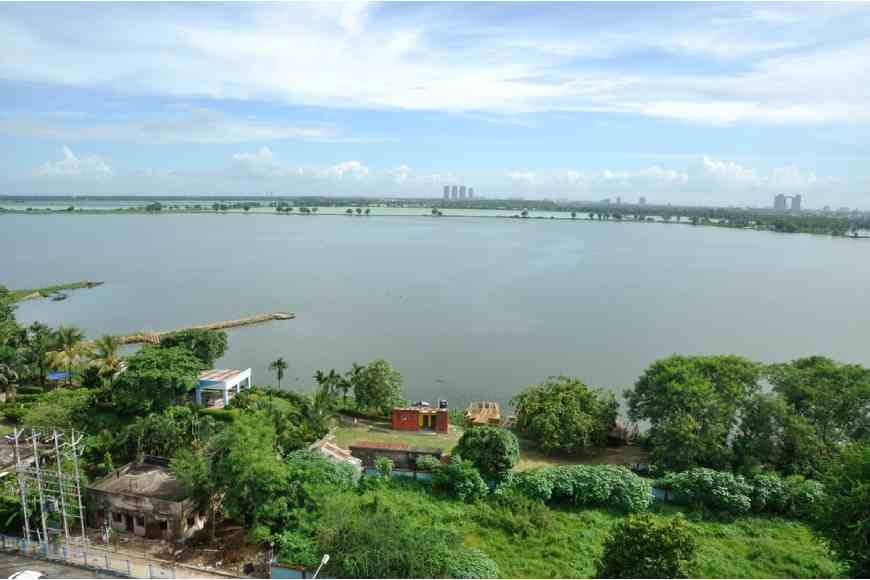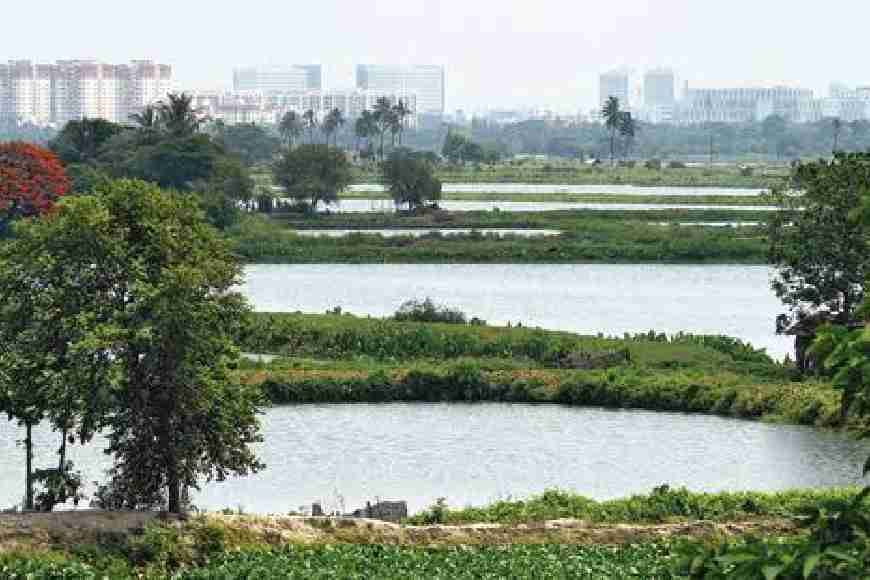Will ‘Amrit Dharohar’ scheme of Union Budget help protect East Kolkata Wetlands?

It seems that the recent Union Budget presented by Union Finance Minister Nirmala Sitharaman had the ‘Go Green’ tag in mind. And one particular scheme has drawn the attention of environmentalists of Kolkata – a special scheme called ‘Amrit Dharohar’ aimed at protecting vital wetlands of India which sustain aquatic biodiversity. Kolkata particularly is important in this regard as it is surrounded by one of the largest wetlands of the world known popularly as the East Kolkata Wetlands (EKW) that also happens to be a Ramsar site, supposed to be protected under international law. Unfortunately, on and off despite several attempts by the administration to rein in the land sharks, the EKW has fallen prey to real estate development. But ‘Amrit Dharohar’ might change the scenario once and for all, if implemented over the next 3 years, as this scheme aims to achieve sustainable ecosystem development with the help of local communities.
“Involvement of local community is important because if they are taken into the mould of environment protection, there is a chance of saving the EKW,” said well-known environment and green activist Somendra Mohan Ghosh. Ghosh also delved into history and said: “When the British created these wetlands, they gave Izara or lease at very low cost to the locals so that they can fish, farm and cultivate in the area.” True as Ghosh says, the British realized the area can be protected and kept naturally purified if the locals are involved and for their own sustainability they allow these wetlands to thrive.

The 2023-24 budget has allocated Rs 3,079.40 crore to the Ministry of Environment, Forest and Climate Change, which is a 24 per cent increase from last year’s Rs 2,478 crore. As Dr Sima Lahiri, Professor of Environmental Biology, mentions: “India currently has 75 Ramsar sites, which are wetlands of international importance that have been designated under the criteria of the Ramsar Convention on Wetlands. These wetlands have rare or unique biodiversity and play a huge role in protecting the ecological biodiversity of Kolkata and its surroundings. Local communities have always been at the forefront of conservation efforts since colonial rule and if the government wishes to save the EKW from land sharks, then the only way to do it is to involve these people.”
Amrit Dharohar falls under the ‘Green Growth,’ one of the seven priorities of the recent budget. The government will promote their unique conservation values through this initiative. The scheme will be implemented over the next three years to encourage optimal use of wetlands and enhance bio-diversity, carbon stock, eco-tourism opportunities and income generation for local communities. India now has the largest number of Ramsar sites in Asia and the East Kolkata Wetlands is one if the biggest among them. Ghosh points out: “Over the years, the wetlands have not just fallen prey to land sharks, but also have been mindlessly commercialized. The bheris that run in the area no more belong to locals, they have been taken over by bigger businessmen, middlemen etc. who are using the wetlands rampantly for their own purpose without any respect for the surrounding environment. That needs to be stopped immediately and locals need to get involved.”
Ramesh Das who has lived in this area since last 3 generations and had a small waterbody that he used for small-time fishery business lamented: “We are hounded by land sharks, even we receive death threats to give up our water body where since my grandfather’s time we have carried out fishing of carps and other local fishes that go to the local markets. But the bheri owners who are rich and have the money power are grabbing all such smaller ponds and wetlands and cultivating brackish water prawns etc. Even the little cultivable land we had has been taken over already. The land price in this area is very high. Many locals are falling prey to greed and selling off their small farmlands and moving to other places. As long as we stayed here, we tried to protect the surroundings for our own good. Now who will protect?”
Amrit Dharohar is however a participatory scheme, where locals have to be involved and is welcome since the essence of Ramsar site management is wise use of wetlands and local use of wetlands, not to commercialise them thoughtlessly.
“The other issue with EKW is the so-called eco-tourism promotion,” mentions Lahiri. “What is eco-tourism, and what is its value unless you can be part of the environment? Just by building cottages and allowing the urban folk some fishing games etc. does not ensure that the area is protected. Rather it promotes urbanites who have no awareness about environment to come here, hold picnics, litter the water bodies further and choke them.”
In 2021, the West Bengal Government had drawn up a Rs 120-crore East Kolkata Wetland Management Plan to save the “lungs and kidney” of the city. The plan, which was drafted with the help of experts, will be implemented over a period of five years. “Everyone realises how important these wetlands are to the survival of our city,” says Minati Patra, a research scholar on Fisheries. “These wetlands not only help in the drainage of the entire city, but help in recharging ground water of the city. It naturally purifies the wastewater of the city and discharges it in rivers. Otherwise, the government would have needed a few thousand crores to treat the effluents,” added Patra.
Hence for our very survival we need to protect and save the Wetlands and this new scheme by involving locals might come handy.









